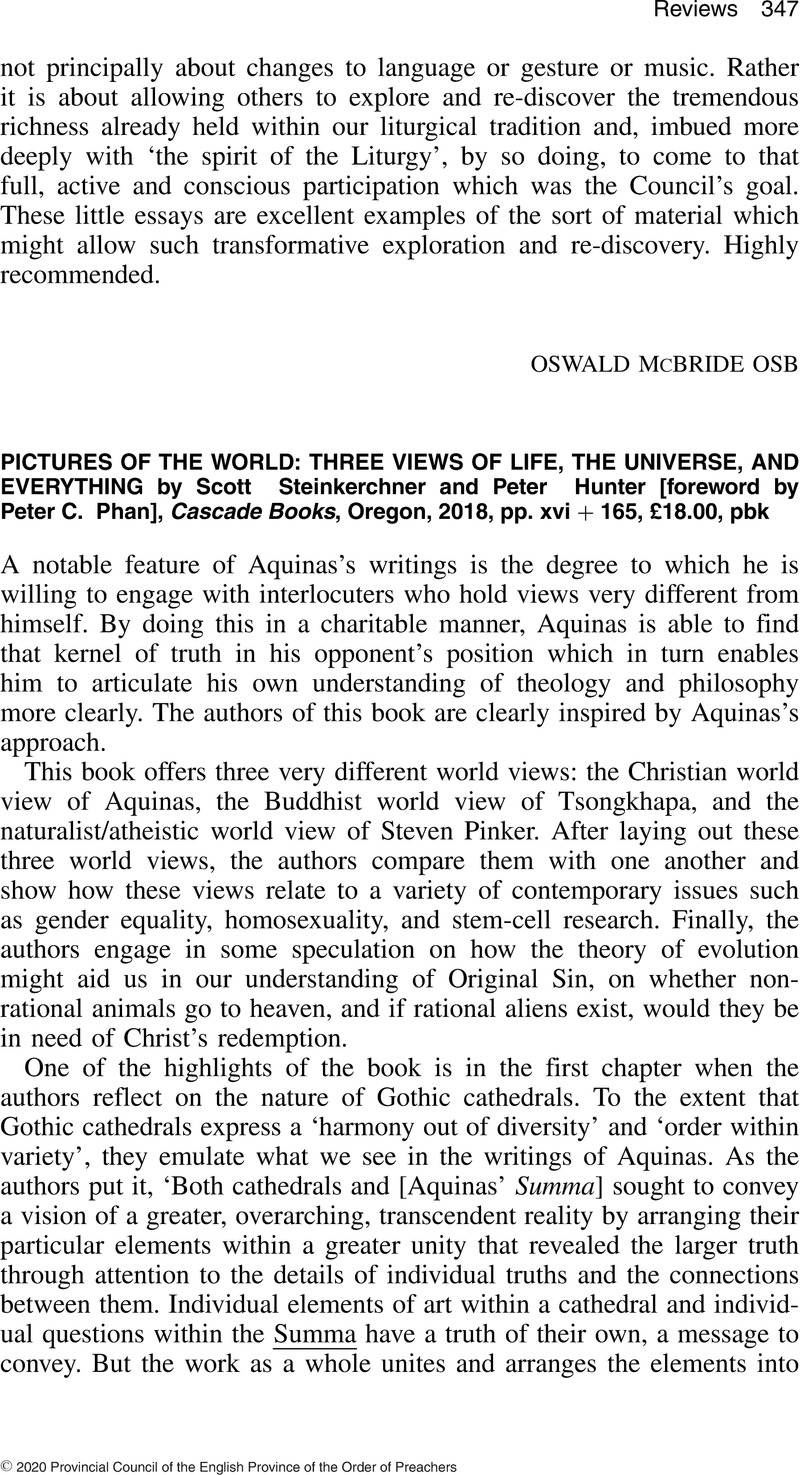No CrossRef data available.
Article contents
Pictures of the World: Three Views of Life, The Universe, and Everything by Scott Steinkerchner and Peter Hunter [foreword by Peter C. Phan], Cascade Books, Oregon, 2018, pp. xvi + 165, £18.00, pbk
Review products
Pictures of the World: Three Views of Life, The Universe, and Everything by Scott Steinkerchner and Peter Hunter [foreword by Peter C. Phan], Cascade Books, Oregon, 2018, pp. xvi + 165, £18.00, pbk
Published online by Cambridge University Press: 01 January 2024
Abstract
An abstract is not available for this content so a preview has been provided. Please use the Get access link above for information on how to access this content.

- Type
- Reviews
- Information
- Copyright
- Copyright © 2020 Provincial Council of the English Province of the Order of Preachers


